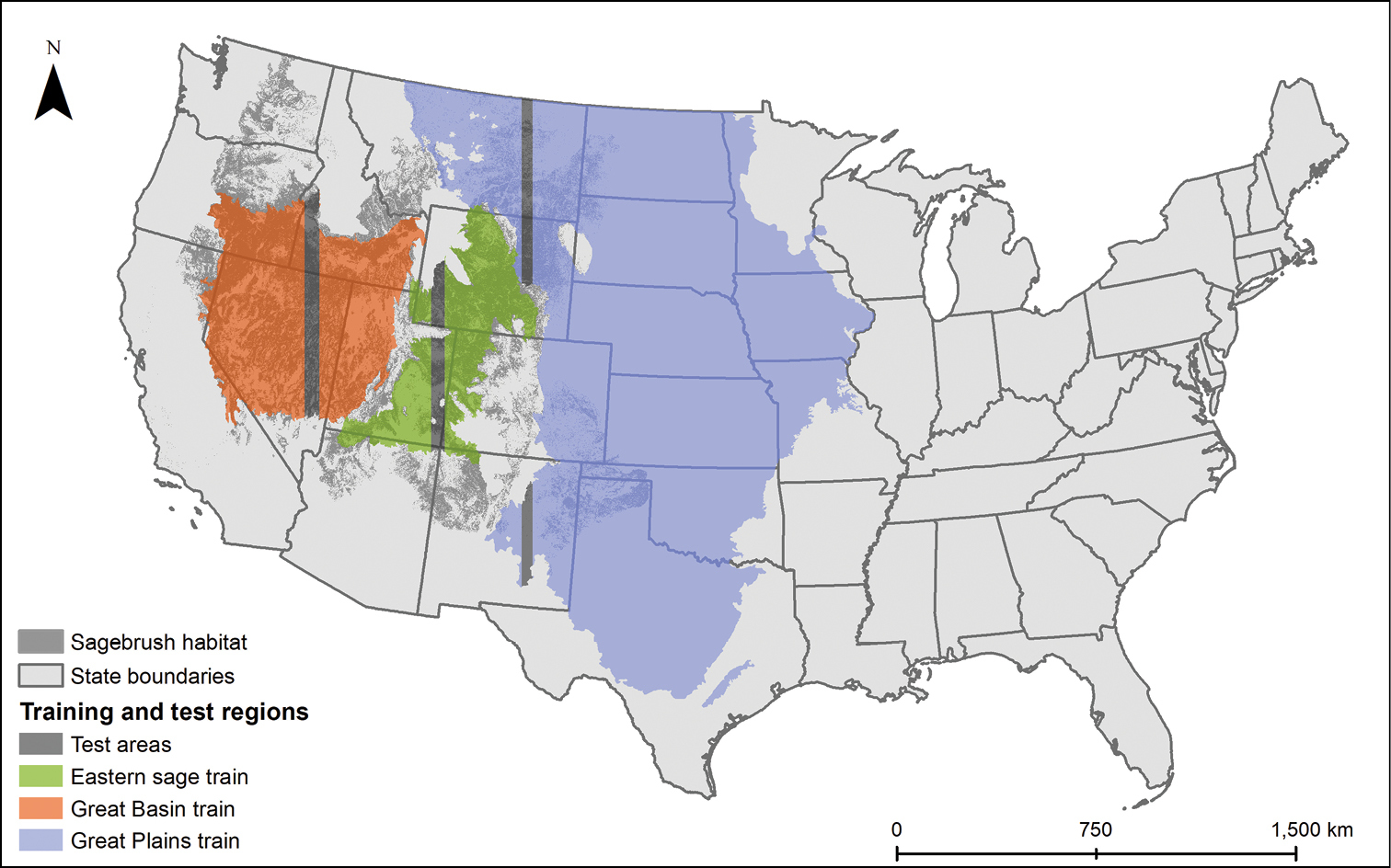
|
||
|
We compared five geographic extents for model estimation while holding validation data constant (occurrence points within dark grey vertical shaded areas). Two geographic training extents were continental and three were regional, and we fit an ensemble of distribution models to the occurrence points for each species within each estimation extent. These extents for model estimation were: 1) the continental United States; 2) all sagebrush habitat within the continental U.S. (gray shading within the western U.S.); 3) sagebrush within eastern sage; 4) sagebrush within the Great Basin; and 5) sagebrush within the Great Plains. Within each of the three regions (shown via colored polygons), we created a test strip (vertical shaded areas) centered on sagebrush habitats, and withheld occurrence points for model performance comparisons. We asked whether a regional or continental training extent yielded higher performance within these test strips, as measured by the Boyce index values. |